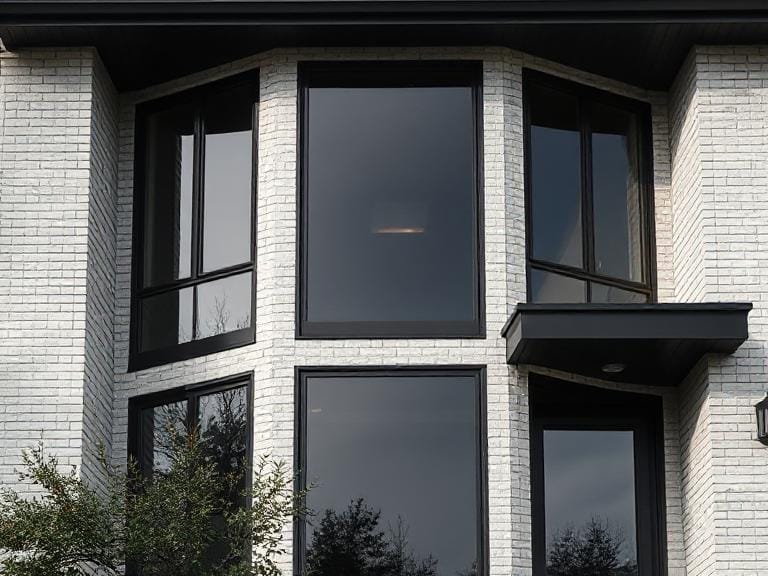Is Glass Tinting Legal in Ontario? What GTA Residents Need to Know
In Ontario, glass tinting regulations are governed by the Highway Traffic Act, which establishes specific laws concerning the permissible levels of tint for vehicle windows. The primary objective of these regulations is to ensure visibility and safety for drivers and passengers, as well as for law enforcement officers. Understanding these regulations is paramount for Ontario residents considering glass tinting for their vehicles.
For standard passenger vehicles, the law dictates that the front windshield must allow a minimum of 70% of light to pass through. This means that darker tints are prohibited on the front windshield, although a non-reflective strip is permitted along the top. Side windows located next to the driver and front passenger must also meet the 70% light transmittance requirement. In contrast, the rear windows and back windshield may have darker tint shades, as there are no specific restrictions on light transmittance levels for these windows. However, even for these rear windows, the use of highly reflective or mirrored materials is subject to additional scrutiny.
Certain exceptions to the general regulations may apply to specialized vehicles. For example, vehicles used by law enforcement or those equipped for medical purposes may have different requirements regarding glass tinting. Furthermore, individuals residing with specific medical conditions may be granted exemptions, allowing for increased levels of tint to help reduce sun exposure.
It’s important for vehicle owners to keep in mind that failing to adhere to the established glass tinting standards can result in penalties, including fines and the potential for removal of the tinted film. Therefore, before proceeding with any glass tinting, it is advisable to consult the latest regulations and, if necessary, seek professional guidance to ensure compliance with Ontario’s laws.
Penalties for Non-Compliance with Tinting Laws
In Ontario, adherence to glass tinting laws is critical for maintaining road safety and compliance with legal standards. Failure to comply with these regulations can lead to various penalties for vehicle owners. The Ontario Highway Traffic Act mandates specific limits on the darkness of window tints, and exceeding these limits constitutes an infraction. Individuals found in violation may be subject to fines, which can range significantly depending on the severity of the non-compliance. Generally, fines for illegal tinting can reach up to $1,000, although repeated offenses may incur higher penalties.
Moreover, besides financial sanctions, vehicle owners may face additional legal ramifications. Law enforcement agencies are equipped with methods to identify non-compliant tinting during routine inspections or traffic stops. Officers may utilize specialized tools, such as light meters, to measure the percentage of light transmitted through the glass. If the tint is determined to be too dark, the driver may receive a ticket, and officers may require immediate corrective actions, potentially leading to the removal of the tint on-site. This not only incurs costs for the vehicle owner but may also affect their insurance rates.
In some situations, persistent non-compliance could result in more severe repercussions, such as the suspension of the vehicle’s registration or a requirement for the vehicle to undergo a more comprehensive mechanical inspection. Maintaining compliance with the established tinting standards is essential for avoiding these complications. Vehicle owners are advised to ensure that any aftermarket tinting complies with Ontario’s laws and to be aware that unlawful tinting can significantly impact not only their finances but also their driving history. The imposition of penalties serves as a reminder for individuals to remain conscious of glass tinting regulations and their responsibilities as road users.

How to Legally Tint Your Vehicle’s Windows in Ontario
Tinting your vehicle’s windows in Ontario requires adherence to specific regulations to ensure compliance with provincial laws. To start, it is crucial to find a certified professional who specializes in vehicle window tinting. These professionals are knowledgeable about the specific laws governing tint darkness and reflective properties. A searchable directory of certified professionals can typically be found through the Ontario Ministry of Transportation’s website or by consulting reputable automotive services in the Greater Toronto Area (GTA).
When choosing window tinting products, it is essential to select materials that comply with Ontario regulations. The law stipulates that the front windshield must allow more than 70% of light in, while the front side windows must also adhere to similar transparency levels. The rear windows and rear windshield can have darker tint shades, but these should still meet the standards established by the local regulations. Reputable tinting professionals will offer products that are compliant with these requirements and can guide you through the selection process.
Before proceeding with the tinting process, vehicle owners should ensure that they have all necessary permits or approvals in place. Although a specific permit may not be required for standard tinting applications, it’s always prudent to double-check local regulations or consult with your tinting professional for guidance. Some jurisdictions within Ontario might have additional rules, so awareness of any regional variations is recommended.
After the installation of the window tint, it is important to keep any receipts or documentation related to the product and installation. This paperwork may be required if stopped by law enforcement to confirm compliance with the legal standards. Through careful consideration of these steps, vehicle owners in Ontario can successfully and legally tint their vehicle’s windows.
Common Misconceptions About Glass Tinting in the GTA
In the Greater Toronto Area (GTA), glass tinting has become a popular modification among vehicle owners seeking style and privacy. However, several misconceptions surrounding the legality and safety of tinted windows often lead to confusion. It is essential to address these myths to ensure that residents are informed about the regulations governing glass tinting in Ontario.
One prevalent myth is that all shades of tint are permissible regardless of the vehicle type. In reality, Ontario has specific regulations regarding the permissible tint for front windshields and windows. The law stipulates that the front windshield must allow more than 70% of light to pass through, effectively limiting darker tint shades. Furthermore, front side windows also need to meet certain light transmittance standards, while back windows and rear windshields have fewer restrictions. Understanding these regulations is crucial for ensuring compliance while enjoying the aesthetic benefits of tinted glass.
Another common misunderstanding concerns the impact of tinted windows on vehicle safety. Some individuals believe that darker tints improve safety by reducing glare and thermal exposure. While it is true that tinted windows can enhance comfort, excessively dark tints can actually impair visibility, particularly at night or during adverse weather conditions. This can lead to hazardous driving situations, which starkly contradicts the notion of safety enhancement. It is of utmost importance for vehicle owners to balance aesthetic preferences with practical safety considerations.
Finally, many residents are unaware of their rights and responsibilities concerning tinted windows. Vehicle owners must adhere to local laws and regulations to avoid potential fines or penalties, as law enforcement agencies actively monitor compliance. Additionally, engaging a reputable glass tinting service that is knowledgeable about the legal standards can ensure that vehicles are appropriately modified without infringing on regulations. By dispelling these common misconceptions, GTA residents can make informed decisions regarding glass tinting and maintain compliance with local laws.







